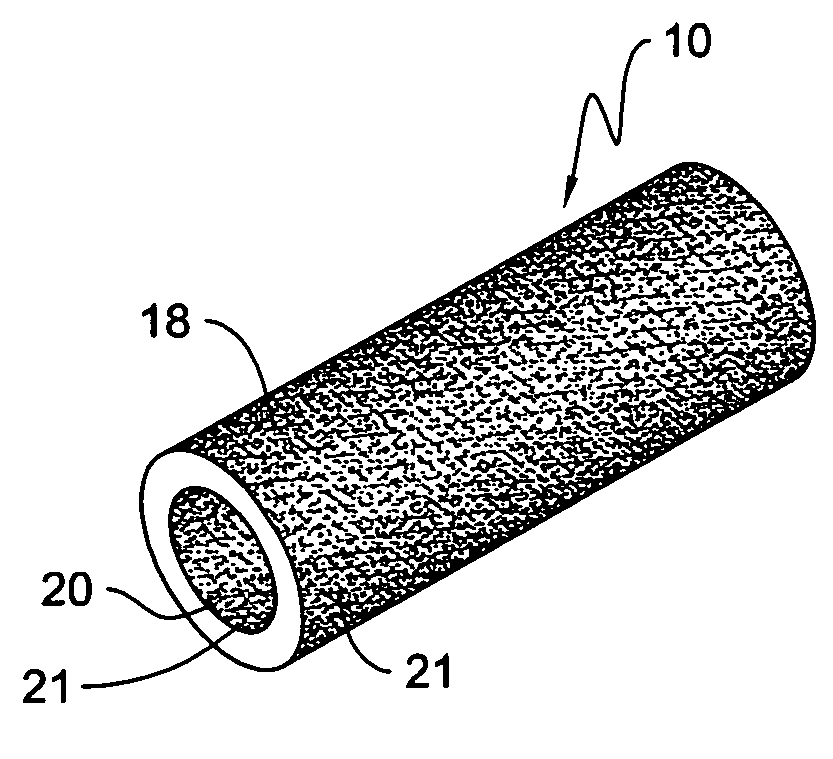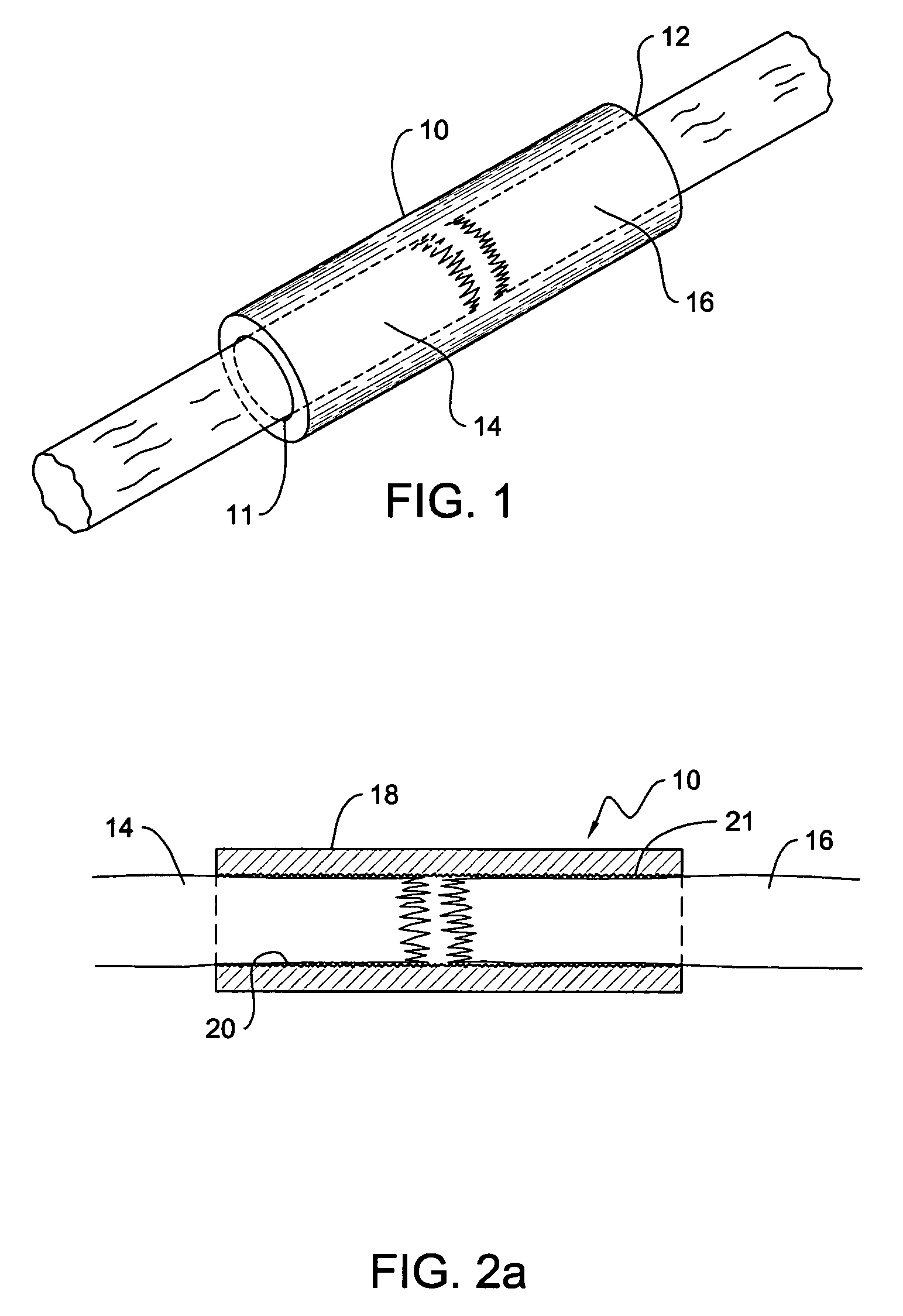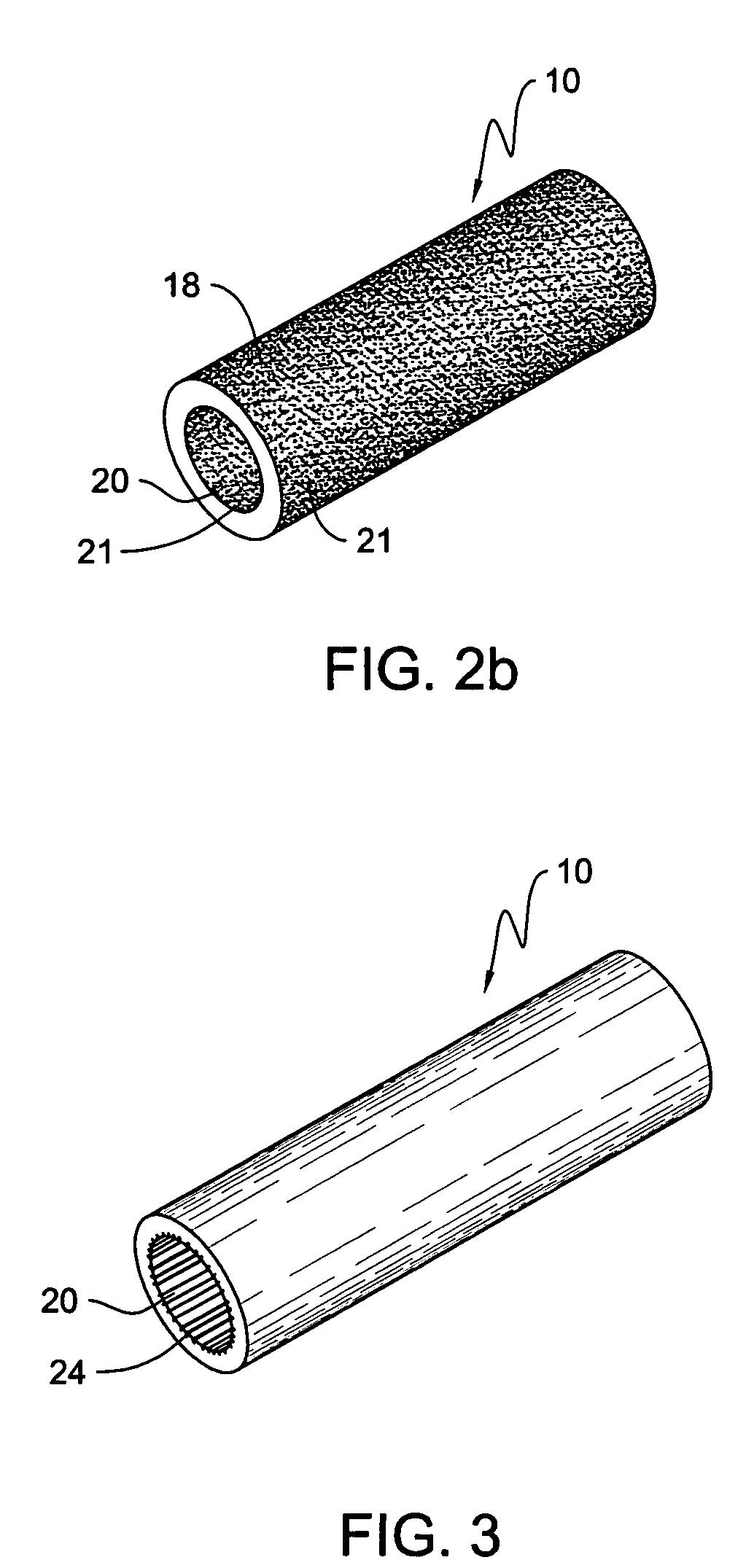Sintered titanium tube for the management of spinal cord injury
a titanium tube and spinal cord technology, applied in the field of tubular membranes, can solve the problems of hindering the elongation or regrowth of axons, hindering the proliferation of axons and neuronal cells, and axons without guidance, so as to facilitate the regeneration of damaged nerves
- Summary
- Abstract
- Description
- Claims
- Application Information
AI Technical Summary
Benefits of technology
Problems solved by technology
Method used
Image
Examples
Embodiment Construction
[0011]For a better understanding of the present invention, reference is made to the following detailed description taken in conjunction with the appended claims and accompanying drawings. Briefly, the present invention relates to a device for the treatment of central or peripheral nerve injuries. More particularly, the present invention is directed to a tubular membrane that may be used for the treatment of the central or peripheral nerve injuries.
[0012]Referring to FIG. 1, an exemplary embodiment of the present invention comprises a tubular membrane 10 having openings 11, 12 that are configured to receive severed nerve ends 14, 16. As shown in FIGS. 2a and 2b, the tubular membrane has an outer surface 18 and an inner surface 20. The inner surface 20 has a plurality of pores 21 with diameters in the range of 1–3 μm and depths of at least 0.5 μm. Depending on the desired application, the outer surface 18 may also have a plurality of pores 21 with similar diameters in the range of 1–3...
PUM
 Login to View More
Login to View More Abstract
Description
Claims
Application Information
 Login to View More
Login to View More - R&D
- Intellectual Property
- Life Sciences
- Materials
- Tech Scout
- Unparalleled Data Quality
- Higher Quality Content
- 60% Fewer Hallucinations
Browse by: Latest US Patents, China's latest patents, Technical Efficacy Thesaurus, Application Domain, Technology Topic, Popular Technical Reports.
© 2025 PatSnap. All rights reserved.Legal|Privacy policy|Modern Slavery Act Transparency Statement|Sitemap|About US| Contact US: help@patsnap.com



